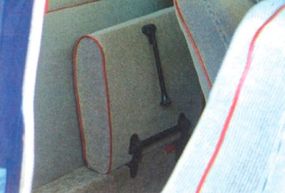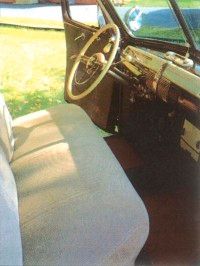1941 Ford Models
In mid-September 1940, Henry Ford -- in his last appearance at a new car introduction -- received 500 reporters to see the new 1941 Ford models. True to form, he said little, but the car said a lot about the company's willingness to go with the flow.
The 1941s were the first of the "fat" Fords, with a clean contemporary look that was right in tune with the era. Further, Ford now even offered a flathead six, a clear concession to the competition.
Advertisement
In late September, the new models were introduced at 6,000 Ford dealers. While the public response was quite positive, sales weren't altogether encouraging. Ford finished the model year with 691,455 cars produced against slightly over a million Chevrolets. Ford sales were up 150,000 from 1940 because of an improving economy -- and because some people sensed that the 1941s might be the last Fords available for a long time.

But Chevrolet was up well over 200,000 in a banner year for the industry. Despite more models, an additional series, and the new six, Ford wasn't penetrating the market place. In fact, the six was a sales disappointment.
Ford's 1941 wheelbase grew from 112 to 114 inches, overall length from 188.25 to 194.3 inches, and weight increased 150 pounds on average due to a beefier frame and bigger new bodies. The frame, lifted from the 1939-1940 Mercury, was wider and twice as rigid as the 1940 Ford, aided by an "X" box crossmember welded at eight points to the sidemembers.

The primary engine was essentially the 221-cubic-inch flathead V-8 introduced in 1932, except that by now it was rated at 90 horsepower at 3,800 rpm. The six (replacing the little gutless V-8 60) was a breakthrough only in that Henry allowed it to be produced. This was one of the many bewilderments of 1940s Fords. Old Henry was about as receptive to six-cylinder engines as he was to Roosevelt's New Deal.
The new Fords were distinguished by their three-piece grille, chubby-looking bodies, and sleek profiles enhanced by door handles flush with the stainless side trim and the nearly concealed gas cap. The doors, now over 3.5 feet wide in the Tudor, nearly covered the running boards, and total glass area was increased by nearly four square feet in the sedans.

Fenders, two-piece units to facilitate production, sported headlamps mounted farther apart and parking lights set trimly atop the fenders because containing them within the headlamp bezels had been made illegal in some states.
The wider bodies and frame permitted a seven-inch-wider front seat in the Fordor as well as more spacious rear seating. Not only was the 1941 Ford bigger, it rode better due to its longer wheelbase, greater length and weight, and a 125-inch "spring base" (distance between the transverse springs).
The ride was softer with slower-acting springs and shocks and a newly designed ride stabilizer. Seat springs and cushions were redesigned for greater resiliency. Combined with quieter engines; a frame that eliminated the old Ford shake, rattle, and roll; and better body construction and insulation; the 1941 Ford ushered in a new era of quiet and quality Fords that must have distressed old "hard ride" Henry.
While Gregorie was in charge of the whole design project, credit for the detailing and ornamentation went to Bruno Kolt and Willis P. Wagner. Especially noteworthy was the sweeping horizontal dash with all the gauges contained under a single piece of ivory plastic -- the same concept as in 1940, but better executed. Wagner would play a key role in trim and detail on all models through 1948.
To read about the introduction of the Super DeLuxe, continue to the next page.
For more information on cars, see:
- Classic Cars
- Muscle Cars
- Sports Cars
- New Car Search
- Used Car Search
